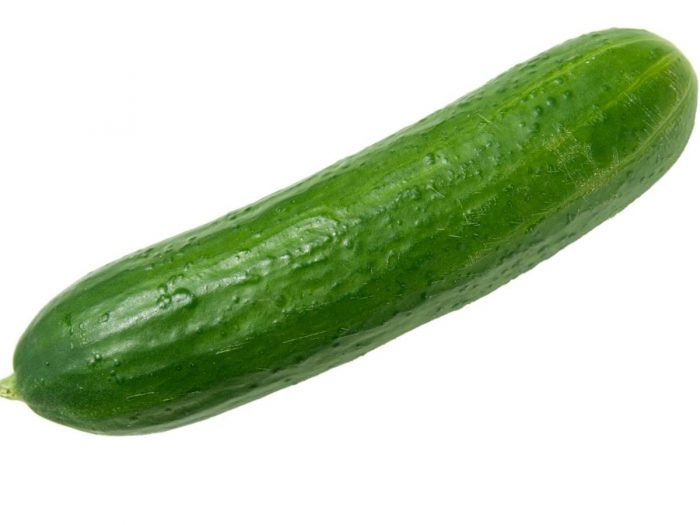- Cucumbers are extremely beneficial for overall health, especially during the summer since it is mostly made of water and important nutrients that are essential for the human body. The flesh of cucumbers is rich in vitamins A, C, and folic acid while the hard skin of cucumbers is rich in fiber and a range of minerals include magnesium, molybdenum, and potassium. Additionally, cucumber contains silica, a trace mineral that contributes greatly to strengthening our connective tissues. Cucumbers are known to heal many skin problems, under eye swelling and sunburn. Cucumbers also contain ascorbic and caffeic acids which prevent water loss, therefore cucumber is frequently applied topically to burns and dermatitis.
Scientifically known as Cucumis sativus, cucumbers belong to the same family as zucchinis, watermelons, pumpkins, and other types of summer squash.
- Cucumbers typically eaten fresh are calledslicing cucumbers. Gherkin cucumbers are specially produced to make pickles. These are much smaller in size than slicing cucumbers. Slicing cucumbers are available throughout the year, but they are at their best between May and July. Cucumbers originated in India almost 10,000 years ago, but are now cultivated in many different countries and continents. Recently, different varieties of cucumbers are traded on the international market and you will find them in abundance all year long.
In the ancient civilizations of Egypt, Greece and Rome, cucumbers were very popular, and their uses were not limited to just being food. It was also praised for its beneficial effects on the skin. Louis XIV also cherished cucumbers greatly, and the process of cultivating cucumbers in greenhouses was invented during his time to make sure he was able to have a steady supply of the enjoyable vegetable during any season. The American colonists also took this variety of crunchy and healthy squash to the United States.
Features and Varieties of Cucumbers
You are probably familiar with the phrase “cool as a cucumber”, which speaks directly to the soothing and cooling nature that cucumbers have when eaten. Cucumbers are grown mainly to be eaten fresh, and in India, you will often find sliced cucumbers being sold on the street on sunny afternoons. These cucumbers are usually cylindrical in shape and vary in length from about six to nine inches. However, the size of cucumbers varies according to a variety of cultivating factors as well.Health Benefits of Cucumbers
 It is still unknown when cucumbers began to be used for pickling, but researchers have speculated that the gherkin variety of cucumber was developed from a native African plant. Spain was one of the countries during ancient times that started pickling cucumbers, since Roman emperors imported them from this Mediterranean country.
It is still unknown when cucumbers began to be used for pickling, but researchers have speculated that the gherkin variety of cucumber was developed from a native African plant. Spain was one of the countries during ancient times that started pickling cucumbers, since Roman emperors imported them from this Mediterranean country.The health benefits of cucumber are not widely known in many cultures. The taste of fresh cucumber is somewhat bland in comparison to other squashes, but it’s thirst quenching, and the cooling quality of this squash is truly refreshing. Cucumbers often act as antioxidants when you consume them with barbecued and fried foods. You can also drink a glass full of cucumber, carrot or orange juice. This will not only give you its wholesome nutrient value, but it is also a unique tasty treat.
Cucumber benefits range from preventing acidity to keeping skin well-toned. Cucumber has high alkaline levels, thus regulating the body’s blood pH and neutralizing acidity. Patients with gastric issues should consume cucumbers frequently. It regulates blood pressure and contributes to the proper structure of connective tissues in our body, including those in the muscles, bones, ligaments, cartilage, and tendons. During the summer, cucumbers help to normalize body temperature. Cucumber juice is diuretic, so it is able to prevent kidney stones. Cucumbers also counter the effects of uric acid, which prevents inflammation in from conditions like arthritis, asthma, and gout. You will be quite surprised to know that this squash also promotes healthy hair growth and can treat skin ailments like psoriasis, eczema, and acne.
